Digital Camera World Verdict
If you’re looking for a tough SDXC card that can transfer images quickly to your computer, the Manfrotto Professional SDXC UHS-II makes a great choice, but if you want to maximize the burst depth of your camera, there are better options out there.
Pros
- +
Rugged construction
- +
Good read/write speeds
- +
Reasonable price
Cons
- -
Limited capacity range
- -
Not Manfrotto’s area of expertise
- -
In-camera performance lags behind other cards
Why you can trust Digital Camera World
Manfrotto is best know as a tripod manufacturer but over the last few years it has started offering other photographic accessories including two SDXC cards. These cards are UHS-II compliant cards and available with a capacity of 64GB or 128GB. Both have read speeds of up to 280MB/s and writes speeds up to 250MB/s and are V90 cards which means that they have minimum write and read speeds of 90MB/s and are suitable for recording 4K and 8K video.
Specifications
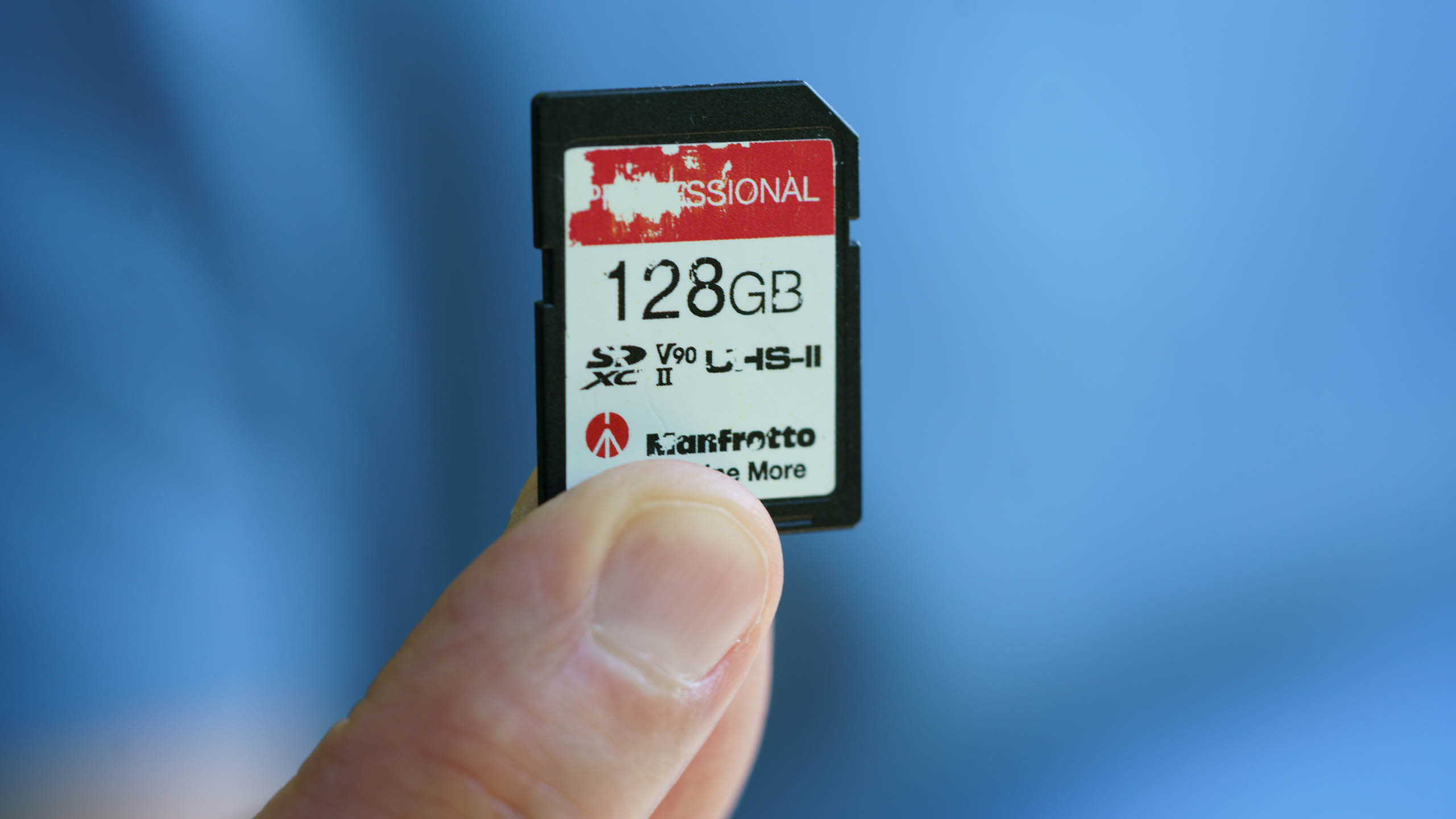
Max read speed: 280MB/s
Max write speed: 250MB/s
Available capacities: 64GB, 128GB
Build and handling
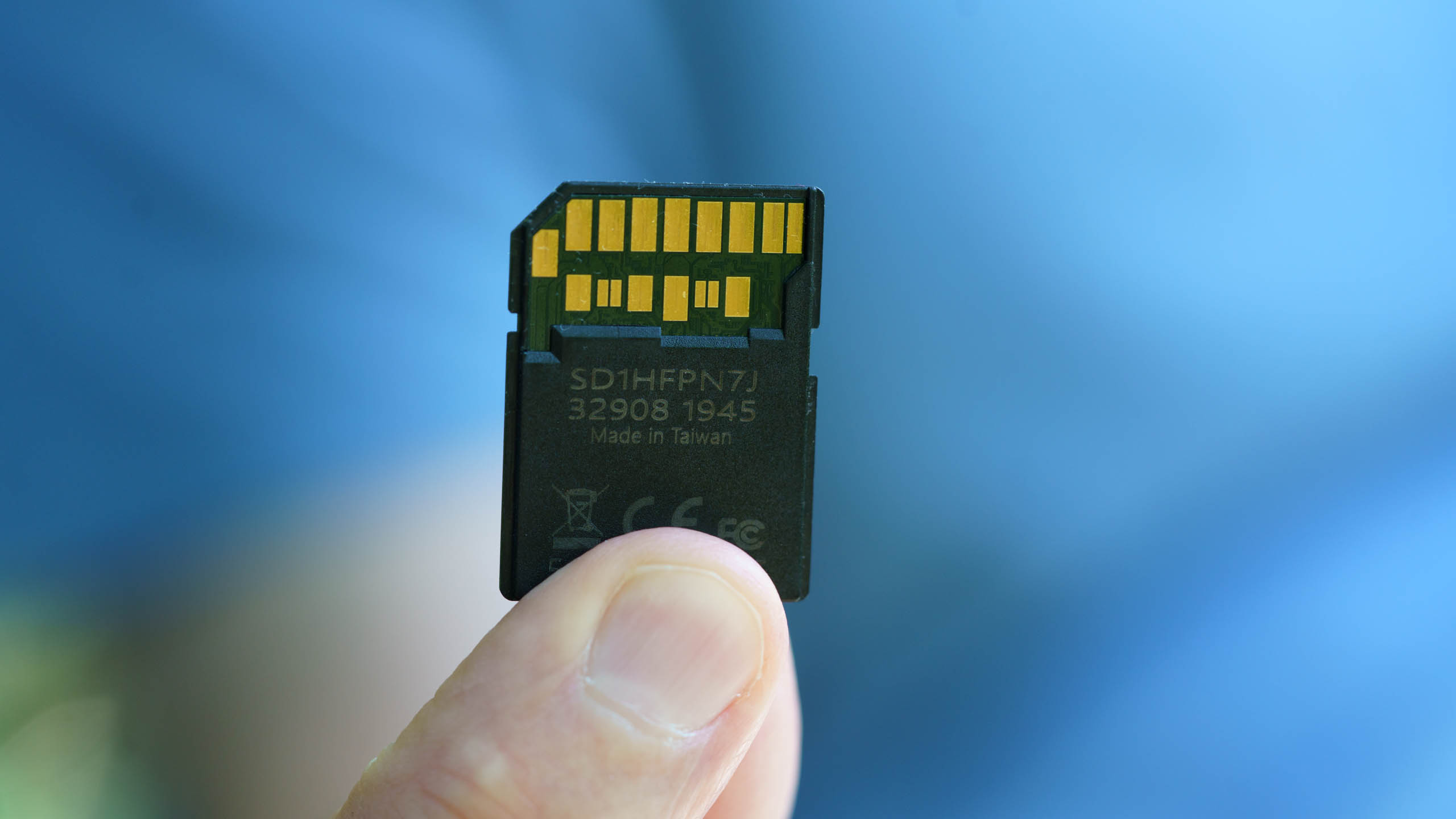
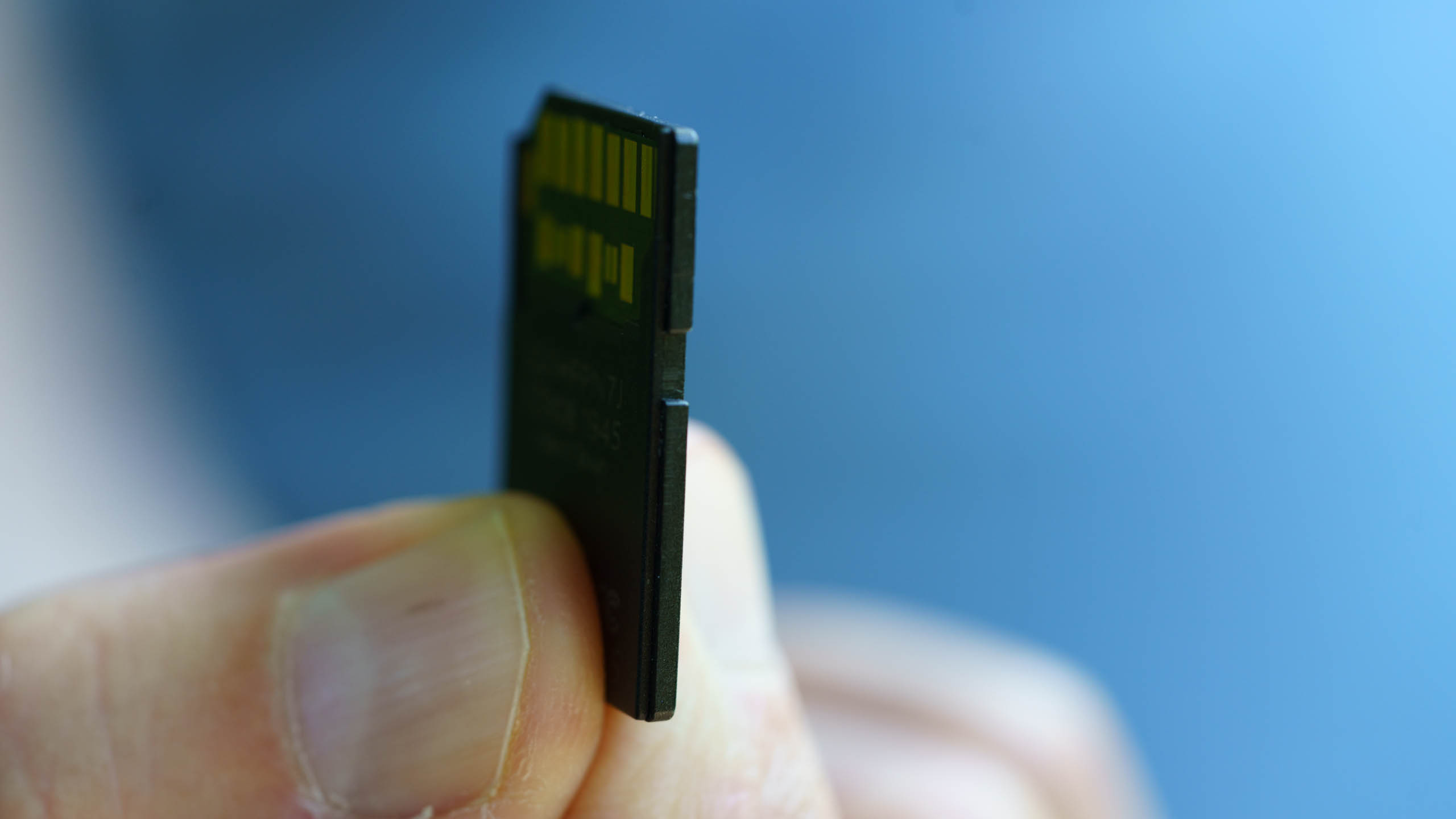
Manfrotto says that its SDXC cards are sealed and protected, with a solid moulded design for the most important area, making them 3x stronger than regular SD cards. In fact, they are able to withstand an impact of over 20Kg, and the 128GB SDXD card that I’ve been testing feels a little stiffer than other cards I have.
Manfrotto also claims that the card is sealed against moisture and dust to an extent that it can be submerged for up to 72 hours. In addition, the card’s operating temperature range is stated as -25°C to 85°C.
Unusually, the Manfrotto Professional SDXC UHS-II card doesn’t have a lock switch. Perhaps Manfrotto saw this as a weak point in the card’s construction, but it means you can’t prevent that card from being accidentally formatted or additional images being written to it.
While the Professional SDXC seems well-built and it slips smoothly in and out of cameras, the label on its front has worn markedly on my sample. It means the card looks quite scruffy and some of the lettering is illegible.
Performance
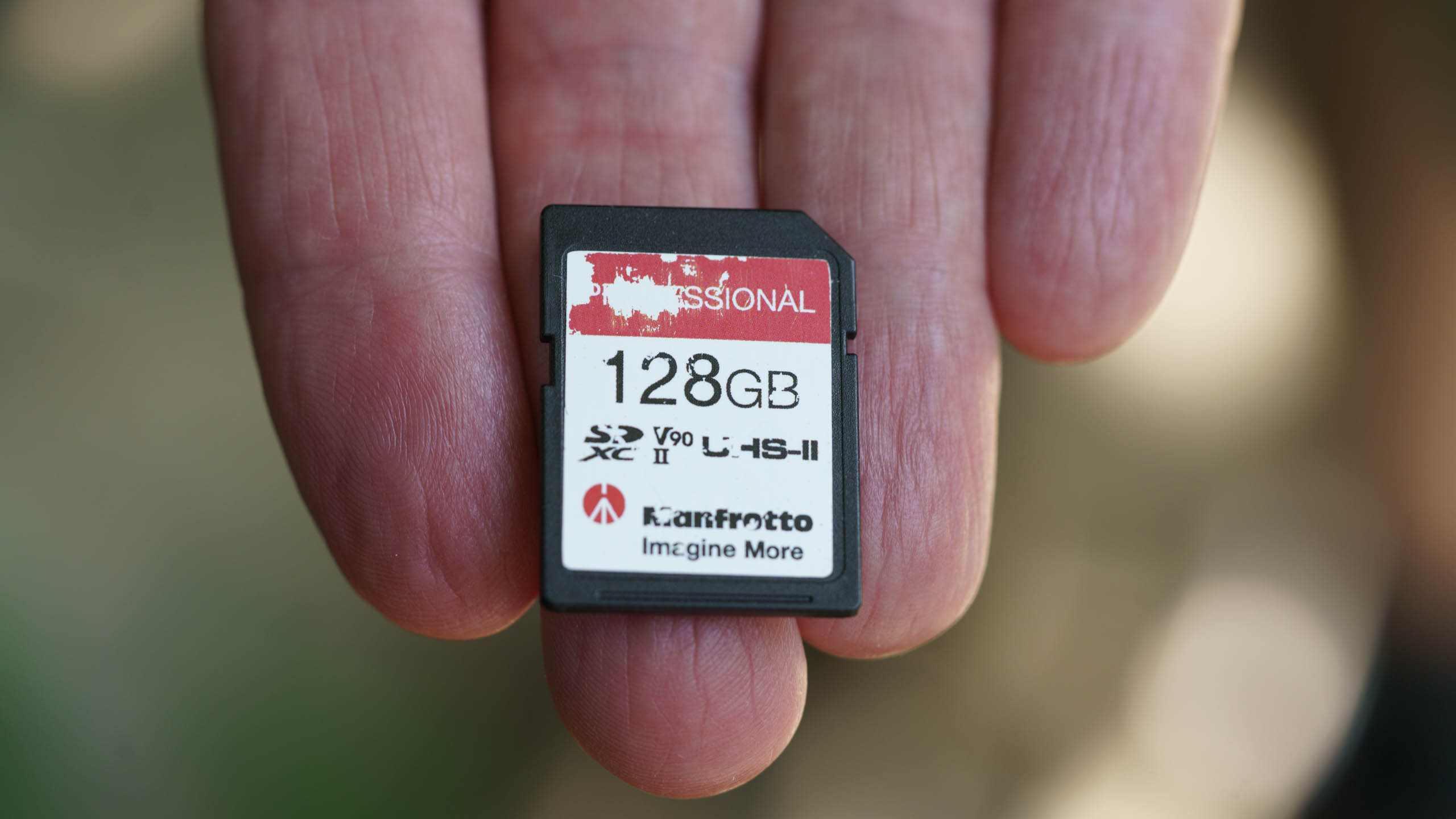
I have had the 128GB Manfrotto Professional SDXC for quite a few months and its given me good service in a wide variety of cameras, capturing stills at fast continuous shooting rates and 4K video. It’s also proved capable of recording 8K video with some compression options, but cameras look for a CFexpress card for 8K raw video and high-quality compression options.
When the 45.7Mp Nikon Z 7II was set to shoot at its highest rate (10fps), I was able to capture 35 14-bit uncompressed raw files. Switching to shoot Fine* quality Jpegs boosted the burst depth to 57 images while I was able to capture 84 Fine quality Jpegs in a single hit. Those Jpeg burst depths are significantly lower than I achieved when using 128GB Kingston Canvas React Plus, Lexar Professional 2000x SDXC UHS-II or PNY X-Pro 90 SDXC UHS-II cards.
Those smaller burst depths come as a bit of a surprise as the Manfrotto SDXC card gave a good account of itself when I tested it with Blackmagic Design’s Disk Speed Test. This returned read speeds of around 240MB/s and write speeds of 199MB/s. Furthermore, 9.7GB of images comprising 100 Fine* Jpegs and 100 14-bit uncompressed raw files from the Nikon Z 7II transferred to my computer in just under 1 minute 38 seconds.
Verdict
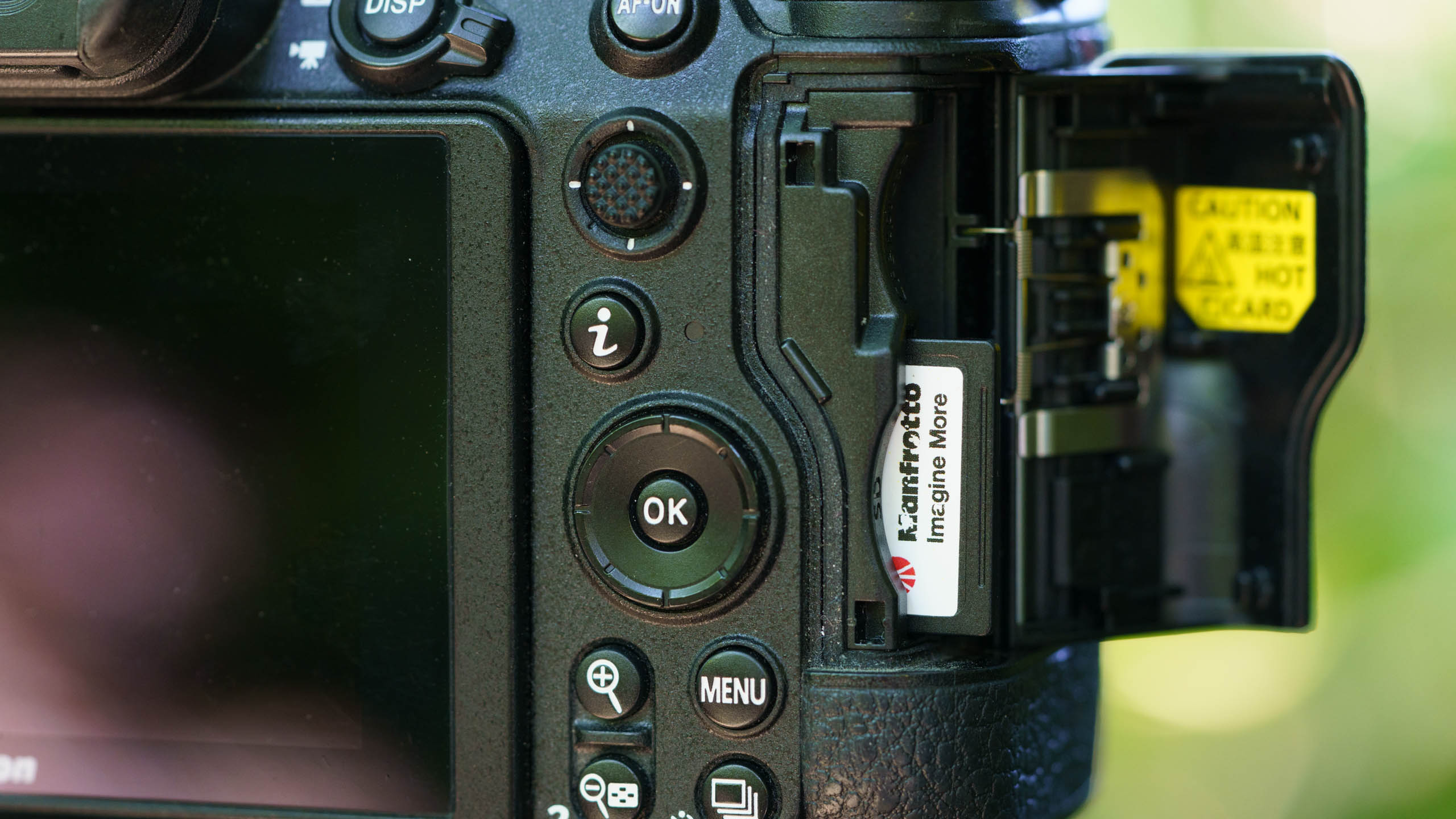
The Manfrotto Professional SDXC UHS-II is a strange mix of a card. It feels tough and can survive a long dunking, but its label wears out quickly so it soon looks scruffy. It also performs well in software testing and is capable of transferring images quickly to a computer, but it doesn’t enable quite such impressive burst depths as some of its competition. If you’re not into sport or action photography, the burst depth might not be such as issue and the durability may appeal.
Read more
Best memory cards
Best memory card readers
Why do some SD cards have two rows of pins?
Memory card symbols explained
Best CFexpress cards
What is CFexpress Type A?
Best CFast cards
Angela has been testing camera gear from all the major manufacturers since January 2004 and has been Amateur Photographer’s Technical Editor and Head of Testing for Future Publishing’s photography portfolio (Digital Camera Magazine, PhotoPlus: The Canon Magazine, N-Photo, Practical Photoshop, Photography Week and Professional Photography magazines, as well as the Digital Camera World and TechRadar websites). She is the founder of SheClicks - a community group that encourages and supports female photographers.


